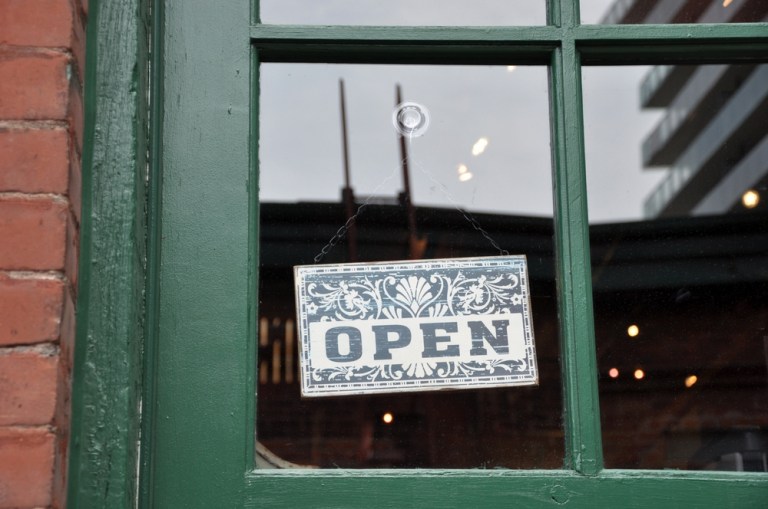
The death of retail — of the brick-and-mortar kind — is nowhere, really, in sight, even as some might say the physical shopping experience is losing its spark.
But it helps to take the pulse and temperature from time to time to gauge retail’s health.
Skava says that physical stores are evolving, not dying. But evolution comes along with challenges and growing pains. Things are tough; there’s no denying that — a sentiment backed up by the numbers.
In an interview with PYMNTS, Skava’s VP of Marketing Yuval Yatskan noted that we are wrapping up the worst year for brick-and-mortar retailers since the 2008 financial crisis. With 5,300 store closures through June of 2017 and as many as 20 retailers this year alone shuttering operations — across marquee names as diverse as Toys R Us and Abercrombie & Fitch — the retail industry is not all that far from the 6,163 stores that closed in 2008.
And yet…
Roughly 90 percent of retailers’ revenue still comes from in-store transactions, which may seem incongruous while stores go dark. Talk about a sticky business model.
It’s an imperative to improve the in-store experience, but retailers can’t seek to change their business models overnight. And, in the case where $90 of every $100 in sales happens in-store, Yatskan stated that “every store that closes down directly impacts that result,” as the rate of revenue lost would be almost proportionate to the number of stores being closed.
Against that outsized impact to the top line, eCommerce sales are not enough to compensate for the hit. This represents a losing battle on its face, as shifting to eCommerce alone as a salve for store closings brings retailers up against Amazon and other online behemoths, said the executive.
Skava’s research finds that 49 percent of shoppers are influenced by digital channels, a direct read from the fact that people are more tech-savvy than ever. Yatskan noted: “They want to learn everything they can about the product before they buy it” — ranging from what peers are saying informally or through websites that offer product reviews. Would-be consumers scour the internet for product dimensions, color, price availability and other data.
If roughly half of the people who complete a transaction in-store do a bit of due diligence online before coming through the door — “it is an integral part of how they view their journey to make a purchase” — retailers have an opportunity to expand a consumer’s knowledge about what is on offer in the tangible sense and set the stage for an enjoyable in-store experience.
In terms of showrooming — an activity 72 percent of online shoppers said they’ve engaged in over the past 12 months with the eventuality of an eCommerce purchase — people come into the store, and “they touch, they feel” the merchandise. But beyond the tactile, opportunity and potential pitfall coexist. What happens if a customer does not buy on-site, does not complete the purchase online (with the same brand) “or, worse, decide to buy the same product from a different brand?” Yatskan queried. There needs to be an exploration of what in the in-store experience does not work for customers.
The impact can be alarming in terms of consumer habit: 69 percent say they will switch to another brand if they receive poor customer service in a store. “What customers are telling retailers [is that customer experience] is more important than the product quality, than pricing, and more than how fast it ships,” Yatskan told PYMNTS. As many as 88 percent prefer strong customer experience over the appeal of a product’s innovation. “If the consumer cannot trust the brand — that they have the right support when they need it, the right warranty and can return items hassle-free … then they won’t make the purchase.”
The 69 percent tally of consumers willing to switch amid perceived poor service proves that a brand’s responsiveness to customer desire for interaction (and education) goes a long way, especially with millennials, said Yatskan. There’s an added benefit to the retailer who offers quality interaction, he said, as research shows that 86 percent of consumers are willing to pay more for a better shopping experience.
In satisfying the customer’s quest for reassurance on a brand’s quality, trust and responsiveness, retailers have a weapon in the arsenal: The human touch, aided by technology such as chatbots (which, again, can set the stage before traffic actually comes into the store, or even as consumers are on the premises interacting with their mobile devices).
On the payments side of the equation, shopping cart abandonment can be online or in-store. In the case of the latter, the last mile of the transaction is crucial — where somebody knows what they want, they know where to get it and they walk into the store. But to get to the final interaction, picking up the item and bringing it to the register, sometimes the personal touch, on-site, helps.
They’ve come to the showroom, they are looking around and now the challenge is to have the customer make the leap to transaction. Here, immersive experience and personalized interaction with associates can cement bonds that last between retailers, consumers and brands. Amid options to complete that crucial last mile: Retailers can allow people to check out promptly without standing in line via remote checkout.
Done well, the physical store experience will not just survive — it will thrive.
To Download: the Physical Stores Are Evolving, Not Dying Infographic, please fill out the form below: